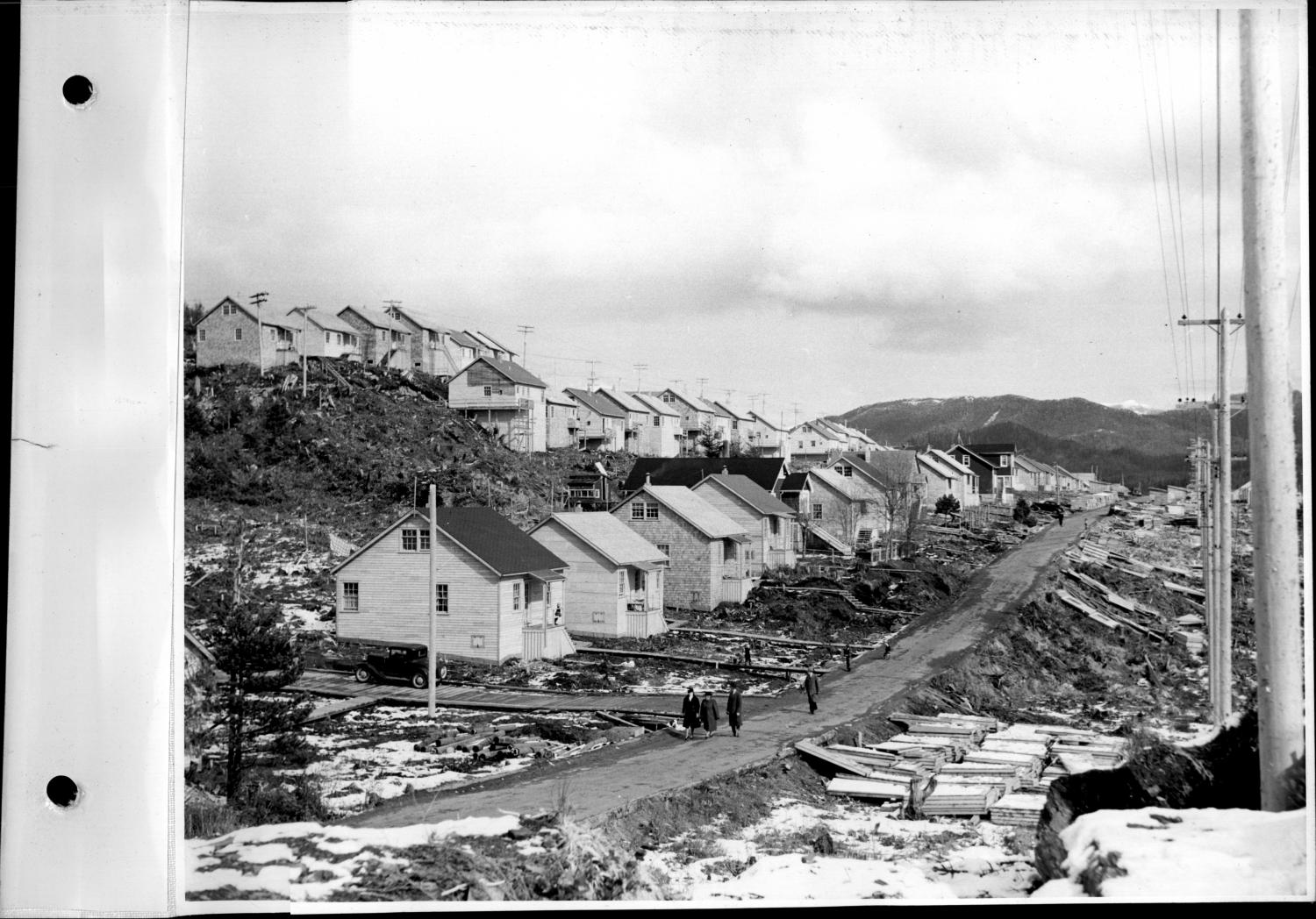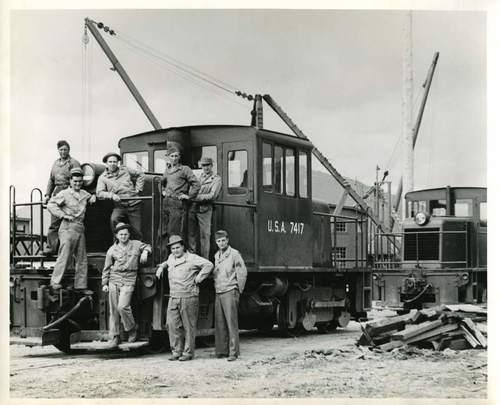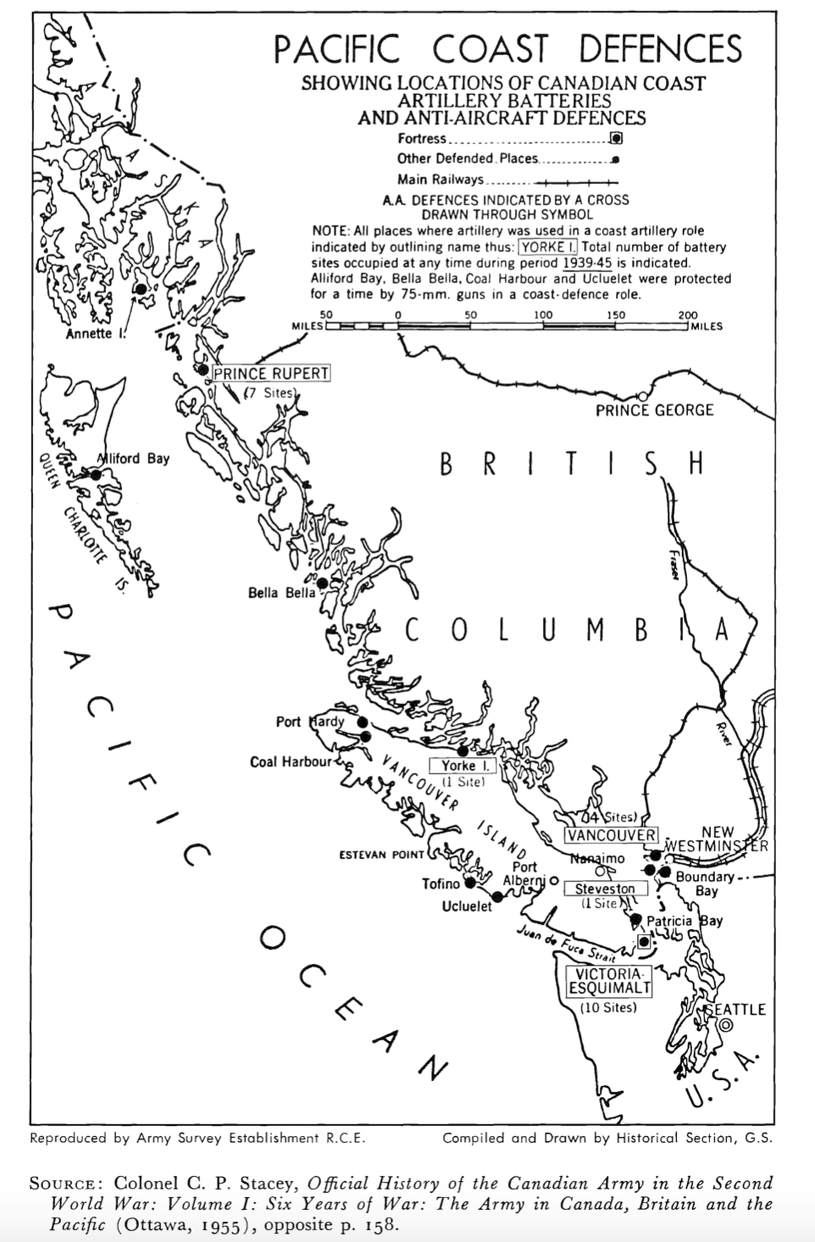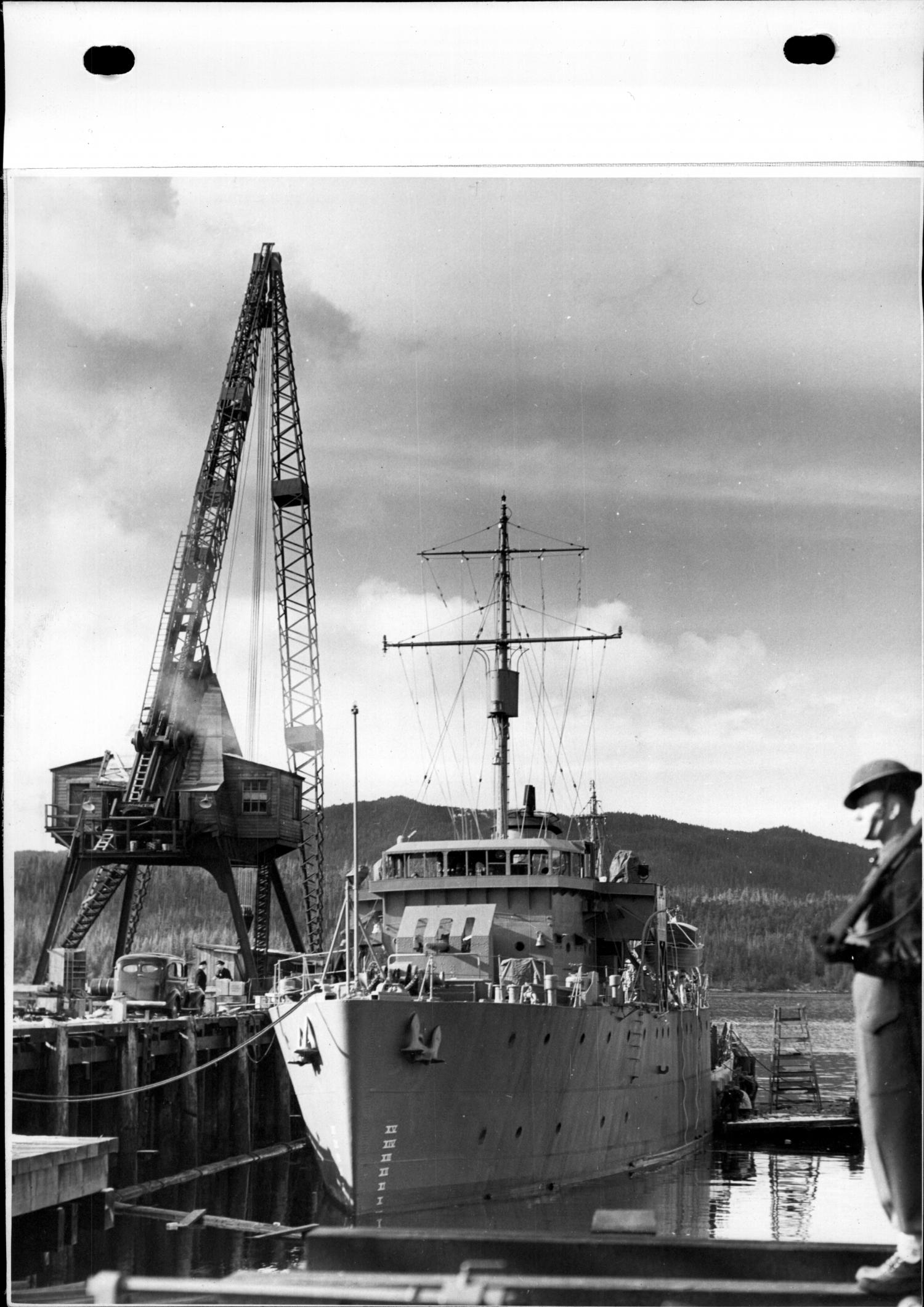Prince Rupert in Wartime
Japan’s entry into World War II transforms the small fishing town
Date: 1942
On Dec. 8, 1941, one day after Japan attacked Pearl Harbour, a panicked West Coast went dark in an organized black-out, unsure where Japan might strike next. The next day, as the effort to frustrate an air attack continued, the Prince Rupert Daily News assured its readers that their humble port town was “as safe as any place on the coast and probably much safer than most places.”
However, alarm soon started to mount, spurred by more Japanese victories in the Pacific and propaganda out of Ottawa. In February 1942, a series of ads encouraging citizens to buy victory bonds ran in the Daily News. “Realize that Prince Rupert is only 3,815 miles from Japan,” read one. “Pearl Harbour is 3,380 miles from Japan — only 435 miles less. And we all know what happened at Pearl Harbour.”
By June 1942, Japan had planted a flag on nearby Alaskan territory. “We may now realize that war is on our doorstep,” cautioned the Daily News. Located just below the Alaskan Panhandle and home to North America’s deepest natural harbour, Prince Rupert quickly became a crucial stage for the American campaign against the Japanese. A fishing town of less than 7,000 had suddenly been thrust into World War II. Soon, it would be transformed by it.
In short order, Prince Rupert’s civilian and military infrastructure quadrupled. American authorities enlarged the port, which was already manufacturing large naval ships, to handle a massive increase in cargo. Heavy artillery arrived to bolster the area's growing number of military forts, as did an armoured train. In nearby Terrace, Smithers and Woodcock, airports were hastily erected. Meanwhile, barracks and other infrastructure sprang up to accommodate a sudden influx of Canadian and American troops. In fact, so many Americans now lived in Prince Rupert’s Acropolis Hill, locals reportedly dubbed the neighbourhood "Little America." Lots of these newcomers helped build the Skeena Highway, a road that still connects Prince Rupert to Terrace. And to reach the new American military base in Port Edward, to the city’s south, workers laid another road.
In just a few short years, the population of Prince Rupert had tripled to around 21,000. According to the city's records, an estimated 73,000 people passed through between 1942 and 1945, along with 100,000 tonnes of high-explosive ammunition. While the town experienced a spike in population, it also lost a sizable Japanese-Canadian community that had coalesced around the local fishing industry. Shortly after Canada declared war on Japan, the government forced anyone with Japanese heritage — Canadian citizens or otherwise — out of coastal areas and into internment camps.
The rush of activity peaked in 1943. Shortly after the Americans reclaimed the far-flung Attu and Kiska Islands that August, the presumed threat to the West Coast shrunk, and Prince Rupert experienced an exodus. By 1951, it had returned to its previous incarnation as a quiet resource town, its population once again below 10,000. Still, despite never facing direct combat, the Second World War had reshaped the town, and its legacy can still be seen today.
Sources:
1. United States Army (Prince Rupert, B.C.) Fonds . Prince Rupert City and Regional Archives, 1943-1945, princerupertarchives.ca/search/detail-bare.php?ID=812.
2. “About Prince Rupert.” City of Prince Rupert, www.princerupert.ca/index.php/community/about.
3. Forsyth, Bruce. Abandoned Bases: British Columbia. Canadian Military History, militarybruce.com/abandoned-canadian-military-bases/abandoned-bases/british-columbia/.
4. Harper Rowse, Sue. In Times of War: Prince Rupert during World War Two. Sue Harper Rowse (Self-Published), 2005.
5. Hunter, T. Murray. Coast Defence in British Columbia, 1939-1941: Attitudes and Realities. BC Studies, Winter 1975-76, ojs.library.ubc.ca/index.php/bcstudies/article/download/855/895/3622.
6. McDonald, Paige. If Japan Should Attack: Perceptions of Fear and Threat in British Columbia’s Newspapers, 1941-1943. Carleton University, 2016, curve.carleton.ca/system/files/etd/a7cdc87c-5284-4f25-b0c8-b387256a4a37/etd_pdf/ae721c1204609d6b85bad08fae15aeb9/mcdonald-ifjapanshouldattackperceptionsoffearandthreat.pdf.
7. The No. 1 Armoured Train. Northword Magazine, 23 Sept. 2009, northword.ca/october-2009/the-no-1-armoured-train.
8. “Population of Urban Centres.” Canada Year Book, 1955, Statistics Canada, 1955, web.archive.org/web/20131209035552/www66.statcan.gc.ca/eng/acyb_c1955-eng.aspx?opt=%2Feng%2F1955%2F195501710145_p.+145.pdf.
9. “The Second World War.” Democracy at War: Canadian Newspapers and the Second World War, Canadian War Museum, www.warmuseum.ca/cwm/exhibitions/newspapers/intro_e.html.
10. von Moos, Kristy. The Canadian Economy and the Second World War. Ingenium Channel, 8 Nov. 2018, ingeniumcanada.org/channel/articles/the-canadian-economy-and-the-second-world-war.
11. World War II, 1939-1949. Lewis Army Museum, lewisarmymuseum.com/history-of-the-army-at-camp-lewis-fort-lewis-and-joint-base-lewis-mcchord/world-war-ii-1939-1949/.





